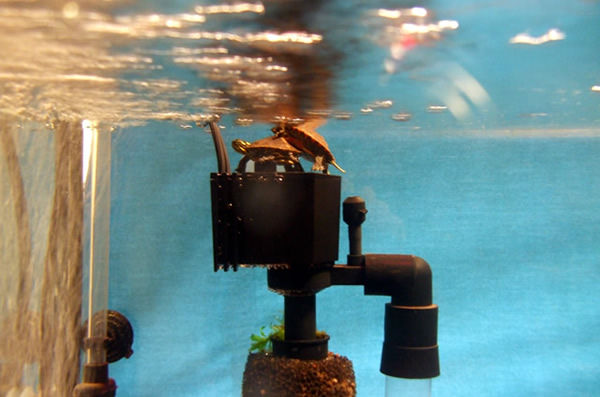Have you ever wondered how to keep the water clean and healthy for your indoor turtle? Well, you’re in luck! In this article, we’re going to discuss how to maintain optimal water quality in indoor turtle enclosures. Whether you’re a beginner turtle owner or have been caring for these reptiles for years, understanding how to properly filter and maintain the water in their enclosure is crucial for their well-being. So, let’s dive in and learn more!
One of the first things you’ll need to consider is the size of your turtle’s enclosure. The larger the enclosure, the easier it will be to maintain water quality. Turtles produce waste, and that waste can quickly accumulate in a small tank, leading to poor water quality. By providing your turtle with ample swimming space, you’ll create a healthier environment for them.
Another important aspect of maintaining water quality is filtration. A good filtration system is essential for removing debris, excess food, and waste from the water. There are several types of filters available, including mechanical, biological, and chemical filters. Each type has its advantages and drawbacks, so it’s important to do your research and choose the one that best suits your turtle’s needs.
In addition to filtration, regular water changes are vital for maintaining optimal water quality. Depending on the size and number of turtles in the enclosure, you may need to perform partial water changes every week or every few days. This helps remove any accumulated waste and keeps the water clean and clear. Plus, turtles love fresh water, so it’s important to provide them with the cleanest environment possible. In our next article, we’ll dive deeper into the specifics of filtration systems and how to properly perform water changes to ensure your turtle’s water quality remains optimal. Stay tuned!
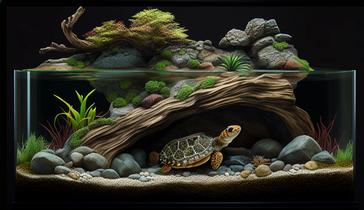
The Importance of Water Quality in Indoor Turtle Enclosures
When it comes to keeping turtles as pets, one of the most crucial factors to consider is water quality. The health and well-being of turtles are directly dependent on the condition of the water in their enclosures. Poor water quality can lead to a variety of health issues and can even be fatal for these beloved pets. Therefore, it is essential for turtle owners to understand the significance of maintaining optimal water quality in indoor turtle enclosures.
The Impact of Water Quality on Turtle Health
Water quality plays a vital role in the overall health and longevity of turtles. Turtles live in water, and it serves as their environment, habitat, and playground. Just like humans need clean air to breathe, turtles need clean water to thrive. Poor water quality can have a detrimental effect on their health and well-being.
Contaminated water can result in the development of several waterborne illnesses, such as shell rot, skin infections, respiratory problems, and eye diseases. These conditions can cause discomfort, pain, and even death if left untreated. Additionally, unhealthy water can weaken the turtle’s immune system, making them more susceptible to diseases and infections.
The Role of Water Quality in Overall Turtle Environment
Water quality not only affects the health of turtles but also plays a significant role in maintaining a suitable environment for them. Turtles require clean water to swim, bask, and perform their natural behaviors. If the water quality is poor, it can adversely affect their natural instincts and behaviors. For instance, if the water is murky or foul-smelling, turtles may become stressed, leading to a decrease in appetite, lack of energy, and a reduced desire to explore their enclosure.
Maintaining optimal water quality is crucial for providing a comfortable and stimulating environment for turtles. It ensures that they can engage in their natural behaviors, such as swimming, hunting, and basking, which are essential for their physical and mental well-being.
Preventing Waterborne Illnesses in Turtles
Waterborne illnesses are a common concern for turtle owners, and they can be devastating for these delicate creatures. Fortunately, by maintaining optimal water quality, the risk of waterborne illnesses can be significantly reduced.
One of the primary ways to prevent waterborne illnesses is by keeping the water clean and free from harmful bacteria, parasites, and other pathogens. Filtration systems are essential in removing debris, uneaten food, and waste products from the water. Regular water changes and partial water replacements also help dilute any potential pollutants and maintain good water quality.
Monitoring and maintaining proper temperature and pH levels are equally important. Turtles are ectothermic, which means they rely on their environment to regulate their body temperature. If the water is too cold or too hot, turtles can become stressed, leading to health problems. Additionally, maintaining the correct pH levels is crucial for the turtle’s overall health and the prevention of shell and skin issues.
By prioritizing water quality and implementing proper maintenance techniques, turtle owners can significantly reduce the likelihood of waterborne illnesses and create a healthier environment for their pets.
Factors Affecting Water Quality in Indoor Turtle Enclosures
Several factors can affect the quality of water in indoor turtle enclosures. Understanding these factors and implementing appropriate measures can help maintain optimal water quality and ensure the well-being of your turtles.
Temperature and pH Levels
Temperature and pH levels are critical factors that directly impact water quality and turtle health. Turtles require specific temperature ranges and pH levels to thrive.
Maintaining proper water temperature is essential to ensure the health and well-being of turtles. Most turtle species prefer water temperatures between 75°F and 80°F (24°C and 27°C). It is crucial to monitor and regulate the water temperature using reliable aquarium heaters or other appropriate heating systems. Extreme temperature fluctuations can stress turtles and compromise their immune system.
In addition to temperature, maintaining proper pH levels is vital for the health of turtles. The optimal pH range for most turtle species is between 6.8 and 7.6. Deviations from this range can lead to shell issues, skin problems, and even respiratory ailments. Regular testing of the water’s pH levels and making necessary adjustments using natural pH regulators or buffers can help maintain optimal water quality.
Filtration and Circulation Systems
Proper filtration and circulation systems are essential for maintaining good water quality in turtle enclosures. These systems remove debris, uneaten food, waste, and harmful substances from the water, ensuring a clean and healthy environment for turtles.
When choosing a filtration system, it is crucial to consider the size of the enclosure and the number of turtles. A filtration system should be capable of handling the volume of water and the waste generated by the turtles. There are various types of filtration systems available, such as mechanical, biological, and chemical filters. Researching and selecting the appropriate filtration system for your enclosure will help ensure optimum water quality.
Proper circulation is also vital. Still water can become stagnant, leading to the growth of harmful bacteria and algae. Implementing a circulation system, such as a water pump or air stones, helps prevent stagnation by promoting water movement and oxygenation. This, in turn, improves the overall water quality and the well-being of the turtles.
Nutrient Levels and Algae Growth
Nutrient levels, particularly nitrates and phosphates, play a significant role in water quality and can directly impact turtle health. Excessive levels of nutrients in the water can lead to the growth of nuisance algae and other harmful organisms.
Nitrates and phosphates primarily enter the water through the decomposition of organic waste, uneaten food, and decaying plant matter. Controlling these nutrient levels is essential to prevent the overgrowth of algae, which can cloud the water, deplete oxygen levels, and create an unsightly and unhealthy environment for turtles.
Regular testing for nitrate and phosphate levels is crucial to monitor and maintain water quality. If elevated levels are detected, appropriate measures, such as reducing feeding amounts, removing excess waste promptly, and employing algae-eating organisms (like snails or algae-eating fish), can help control nutrient levels and minimize algae growth.
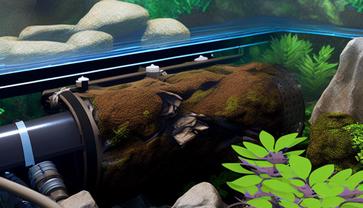
Temperature and pH Management
Maintaining Proper Water Temperature
Maintaining the proper water temperature is vital for the health and well-being of turtles. These cold-blooded creatures rely on external heat sources to regulate their body temperature, so it is essential to provide a suitable thermal gradient within the enclosure.
The required water temperature depends on the species of turtles kept, as different species have different temperature preferences. It is crucial to research and understand the specific temperature requirements of your turtle species to ensure their optimal health and well-being.
To maintain the proper water temperature, it is recommended to use an aquarium heater with a built-in thermostat. This will allow you to set and maintain a consistent and appropriate temperature for your turtles. Regular monitoring of the water temperature with a reliable thermometer is also essential to ensure that the heater is functioning correctly and that the temperature remains within the desired range.
In addition to the heater, it is beneficial to provide basking areas with external heat sources, such as heat lamps or UVB bulbs. These heat sources help turtles thermoregulate by providing warm areas where they can bask and absorb heat. A combination of a heated water environment and appropriate basking spots will ensure that your turtles can regulate their body temperature effectively.
Balancing pH Levels for Turtle Health
Maintaining balanced pH levels in the water is crucial for the health and well-being of turtles. pH stands for “potential of hydrogen” and refers to the acidity or alkalinity of the water. Different species of turtles have different pH preferences, so it is important to know the optimal pH range for your particular turtle species.
The pH scale ranges from 0 to 14, with 7 considered neutral. A pH level below 7 is acidic, while a pH level above 7 is alkaline. Most turtle species prefer slightly acidic to slightly alkaline water, with a pH range of 6.8 to 7.6 being suitable for the majority of species.
Testing the water pH regularly using a reliable aquarium test kit is essential to ensure that the levels remain within the desired range. If the pH deviates from the optimal range, adjustments can be made using natural pH regulators or buffers. These products can help raise or lower the pH to maintain the water’s balance and create a suitable environment for your turtles.
It is important to note that sudden drastic changes in pH levels can be stressful for turtles. Therefore, any adjustments to pH should be done gradually over time, allowing the turtles to acclimate to the changes in their environment.
Filtration and Circulation Systems
Choosing the Right Filtration System
Selecting the appropriate filtration system for your indoor turtle enclosure is essential for maintaining optimal water quality. A good filtration system helps remove debris, uneaten food, waste, and other impurities from the water, ensuring a clean and healthy environment for the turtles.
There are various types of filtration systems available, each with its own advantages and disadvantages. The most common types include mechanical, biological, and chemical filtration.
Mechanical filtration involves physical filtration media, such as filter sponges, pads, or floss, which trap and remove large debris and particles from the water. It is the first line of defense in a filtration system and helps prevent clogs and blockages in the other filtration components.
Biological filtration utilizes beneficial bacteria to break down harmful substances, such as ammonia and nitrites, into less toxic forms, ultimately converting them into nitrates. This process, known as the nitrogen cycle, is essential for maintaining a healthy and balanced aquatic ecosystem. Biological filtration media, such as porous ceramic rings or bio-balls, provide a large surface area for the growth of beneficial bacteria.
Chemical filtration involves the use of activated carbon or chemical resins to remove impurities, odors, and discoloration from the water. These filtration media can be beneficial in removing harmful chemicals, such as chlorine or heavy metals, as well as adsorbing organic compounds that may contribute to poor water quality.
When choosing a filtration system, it is important to consider the size of your enclosure, the number of turtles, and the specific needs of your turtle species. A filtration system that adequately handles the volume of water and waste produced by the turtles will ensure effective filtration and maintain optimal water quality.
Maintaining Clean Water with Proper Circulation
Proper water circulation is essential for maintaining good water quality in indoor turtle enclosures. Stagnant water can lead to the buildup of debris, uneaten food, waste, and harmful substances. It also promotes the growth of algae and bacteria, resulting in foul-smelling, cloudy water.
Implementing a suitable circulation system helps prevent stagnation by promoting water movement and oxygenation. This has several benefits, including reducing the risk of harmful bacteria growth, enhancing the effectiveness of filtration systems, and maintaining proper oxygen levels for turtles.
There are various ways to create circulation within the enclosure. Water pumps, powerheads, air stones, and air pumps are commonly used for this purpose. These devices help create water movement, preventing debris from settling and encouraging filtration systems to operate more efficiently. They also enhance oxygenation by increasing the surface agitation, allowing for the exchange of oxygen and carbon dioxide.
Properly positioning the circulation devices is important to ensure that the water flow reaches all areas of the enclosure. This helps maintain clean water throughout the entire tank and minimizes the risk of stagnant areas where debris and waste can accumulate.
It is crucial to regularly clean and maintain circulation devices to prevent clogging and ensure their effectiveness. Remove any debris or algae that may accumulate on the device, as these can hinder water flow and reduce circulation efficiency.
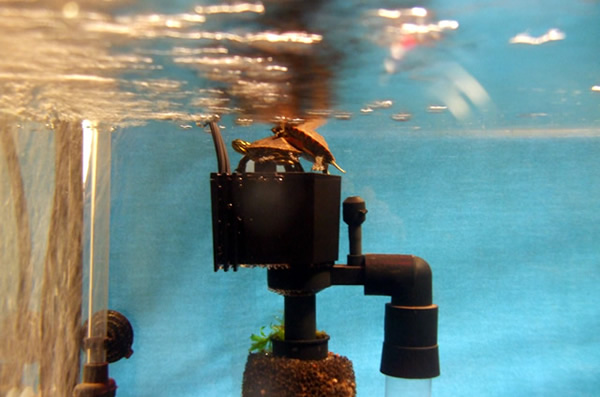
Managing Nutrient Levels and Algae Growth
Controlling Nitrate and Phosphate Levels
Controlling nutrient levels, particularly nitrates and phosphates, is crucial for preventing excessive algae growth and maintaining optimal water quality in indoor turtle enclosures.
Nitrates and phosphates are essential nutrients for plants, but when present in excess, they can lead to the growth of nuisance algae. These algae can quickly take over the tank, causing the water to become cloudy, green, or even black. Excessive algae growth can also deplete oxygen levels, harm beneficial bacteria populations, and create an unsightly environment.
To control nitrate and phosphate levels, it is important to implement proper feeding practices and regular waste removal. Overfeeding is a common cause of excessive nutrient buildup in the water. Uneaten food can decompose, releasing nitrates and phosphates into the water. Feeding your turtles the appropriate amount of food and removing any uneaten food after feeding sessions can significantly reduce nutrient levels.
Regular waste removal is also crucial for maintaining optimal water quality. Turtles produce waste, and if left in the water, it can contribute to the nutrient load. Regularly removing solid waste and performing partial water changes reduces the amount of waste decomposing in the enclosure.
In addition to proper feeding and waste removal, employing algae-eating organisms can help control excessive algal growth. Snails, shrimp, herbivorous fish, and certain species of algae-eating turtles can consume algae and help keep it in check. However, it is important to research compatibility and ensure adequate space and resources for these organisms in the enclosure.
Preventing Excessive Algae Growth
Excessive algae growth can be a persistent problem in indoor turtle enclosures. While some algae growth is normal and can even be beneficial to a balanced ecosystem, excessive growth can disrupt water quality and hinder the health of the turtles.
To prevent excessive algae growth, it is important to establish a balance in the enclosure. Here are some practices that can help:
-
Limiting the amount of light: Algae thrive on light, so controlling the amount of light in the enclosure can help prevent excessive growth. It is important to provide your turtles with an appropriate photoperiod, mimicking their natural day-night cycles. Avoid placing the enclosure in direct sunlight or in areas with intense artificial lighting.
-
Using proper filtration and circulation: A well-maintained filtration system and proper water circulation help remove nutrients and prevent stagnant areas. This reduces the available resources for algae growth and promotes a healthier aquatic environment.
-
Regular cleaning and maintenance: Regularly cleaning the enclosure, including removing debris, uneaten food, and waste, helps reduce the nutrient load in the water. Manual removal of visible algae from surfaces and decorations also helps prevent its unchecked growth.
-
Implementing natural control methods: Introducing algae-eating organisms, such as snails or algae-eating fish, can help control excessive algal growth. These organisms consume algae and help maintain a balanced ecosystem.
It is important to note that algae growth may still occur to some extent, even with proper maintenance. However, by implementing these preventive measures, you can significantly reduce the likelihood of excessive algae growth and maintain optimal water quality for your turtles.
Water Testing and Monitoring
Regular testing and monitoring of water parameters are crucial for ensuring optimal water quality in indoor turtle enclosures. Various factors, including ammonia, nitrite, nitrate levels, pH, temperature, and dissolved oxygen, should be regularly assessed to ensure the health and well-being of your turtles.
Regular Testing for Ammonia, Nitrite, and Nitrate Levels
Ammonia, nitrite, and nitrate are key water parameters that need to be monitored to prevent waterborne illnesses and maintain optimal water quality.
Ammonia is a toxic compound released from the breakdown of waste, uneaten food, and decaying organic matter. High ammonia levels can cause stress, skin irritation, respiratory problems, and even death in turtles. Regularly testing for ammonia levels in the water with a reliable test kit is essential. If elevated levels are detected, immediate action should be taken to address the issue.
Nitrite is another toxic compound produced during the nitrogen cycle. High nitrite levels can also be harmful to turtles, leading to lethargy, loss of appetite, and damage to their internal organs. Regular testing for nitrite levels is necessary to ensure that the biological filtration system is functioning effectively.
Nitrate is the final product of the nitrogen cycle and is less toxic than ammonia and nitrite. However, excessively high nitrate levels can still be detrimental to turtles, leading to stress, poor growth, and compromised immune function. Regular testing for nitrate levels and maintaining them within acceptable ranges is crucial for ensuring optimal water quality.
Testing kits for ammonia, nitrite, and nitrate levels are readily available at pet stores or online retailers. Following the instructions provided with the test kit, collect water samples from your enclosure and conduct the tests as directed. Regular monitoring of these levels allows you to take appropriate measures to maintain optimal water quality and the health of your turtles.
Monitoring pH, Temperature, and Dissolved Oxygen
In addition to testing for ammonia, nitrite, and nitrate levels, monitoring pH, temperature, and dissolved oxygen is fundamental for maintaining optimal water quality in indoor turtle enclosures.
pH levels should be regularly monitored to ensure that they remain within the appropriate range for your turtle species. Deviations from the optimal pH range can impact the health of turtles and may indicate the need for adjustments to the water’s chemistry.
Monitoring the water temperature is important for ensuring that it remains within the preferred temperature range for your turtle species. Fluctuations in temperature can cause stress and compromise the immune system of turtles. Regularly checking the water temperature with a reliable thermometer allows you to make any necessary adjustments to maintain a stable and comfortable environment for your turtles.
Dissolved oxygen levels are also critical for maintaining optimal water quality. Adequate oxygenation of the water is essential for the health and well-being of turtles. Insufficient oxygen levels can lead to stress, lethargy, and compromised immune function.
While testing kits for dissolved oxygen levels are less common and more expensive, there are alternative methods for assessing oxygen levels. Monitoring the turtle’s behavior and overall health can provide valuable insights into the oxygenation of the water. Signs of distress, gasping at the surface, or the inability to stay submerged for extended periods may indicate low oxygen levels. Ensuring proper water circulation and surface agitation can help promote oxygen exchange.
By regularly testing and monitoring these key water parameters, you can quickly identify any issues that may arise and take appropriate measures to maintain optimal water quality in your indoor turtle enclosure.
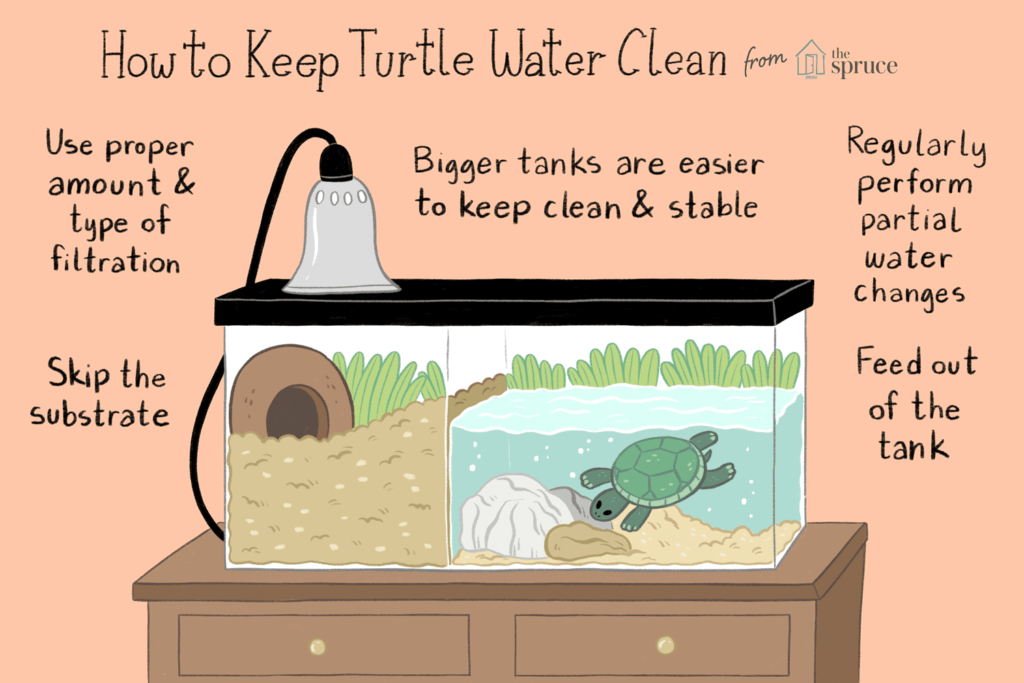
Chemical Treatment Options
While maintaining proper water quality through regular testing and maintenance is the best approach, sometimes chemical treatments may be necessary to address specific issues or to prepare tap water for use in turtle enclosures.
Chlorine and Chloramine Removal
Both chlorine and chloramine are commonly found in tap water and can be harmful to turtles. Chlorine is added to tap water as a disinfectant, while chloramine is a combination of chlorine and ammonia. These chemicals can harm the delicate skin, respiratory system, and beneficial bacteria of turtles.
When preparing tap water for turtle enclosures, it is crucial to remove chlorine and chloramine. This can be achieved by using a water conditioner or a dechlorinator specifically designed for reptile or aquarium use. These products neutralize chlorine and chloramine, making the water safe for turtles.
When adding tap water to the enclosure, it is important to follow the instructions provided with the water conditioner or dechlorinator. It is also beneficial to let the treated water sit for a minimum of 24 hours before adding it to the enclosure. This allows any dissolved gases, such as chlorine, to dissipate naturally.
Chemical treatments should only be used when necessary, such as when filling or changing water in the enclosure. Regular testing of tap water for chlorine or chloramine levels can help ensure that these harmful compounds are being adequately neutralized before introducing the water to the turtles.
Maintaining a Clean Environment
Maintaining a clean environment is vital for the overall health and well-being of turtles. A clean enclosure helps prevent the accumulation of waste, uneaten food, and other debris, which can increase the nutrient load and contribute to poor water quality.
Removing Debris and Solid Waste
Regularly removing debris and solid waste from the turtle enclosure is essential for maintaining a clean and healthy environment. Debris can include shed skin, leftover food, fallen plants, uneaten feeder insects, or any other foreign objects that may enter the enclosure.
Use a gentle aquarium net, a siphon vacuum, or your hands (cleaned thoroughly with warm water and fragrance-free soap) to remove debris from the water. Be careful not to disturb or frighten the turtles during this process.
Solid waste should also be promptly removed. This can be achieved by keeping a close eye on the turtles’ feeding habits and removing any uneaten food immediately. Excess waste can be removed using a fishnet or clean tongs. Regularly inspecting the enclosure for any other solid waste and removing it promptly is equally important.
Regular Water Changes and Partial Water Replacements
Regular water changes and partial water replacements are crucial for maintaining optimal water quality in turtle enclosures. Partial water changes involve removing a portion of the water and replacing it with fresh, conditioned water.
The frequency and amount of water changes depend on various factors, including the size of the enclosure, the number of turtles, and the filtration system’s efficiency. As a general guideline, it is recommended to replace 20-30% of the water every 2-4 weeks. However, if water quality issues arise or the enclosure becomes heavily soiled, more frequent water changes may be necessary.
Before performing a water change or partial water replacement, ensure that the new water is appropriately conditioned and matches the temperature and pH levels of the existing water. Chlorine and chloramine levels should be tested and treated if necessary.
During the water change, it is a good opportunity to clean the enclosure thoroughly. Remove any uneaten food, debris, or waste from the substrate. Clean the glass or acrylic walls of the enclosure using an algae scraper or soft sponge to remove any algae buildup. Rinse any decorations, plants, or other tank accessories with warm water to remove any visible algae or debris.
By regularly performing water changes and partial water replacements, you can effectively remove excess nutrients, waste, and harmful substances from the enclosure, resulting in cleaner water and a healthier environment for your turtles.
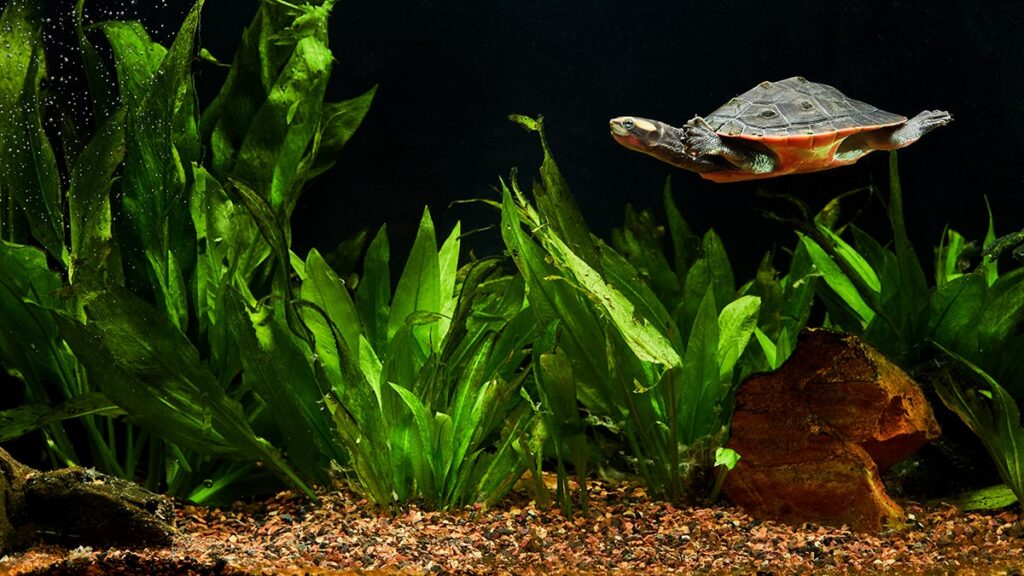
Providing Adequate Basking and Resting Spots
Creating proper basking and resting spots is essential for turtle health and well-being. Turtles require areas where they can comfortably bask and rest, as these behaviors are vital for thermoregulation, digesting food, drying off, and general relaxation.
Creating Proper Basking Areas
Basking areas should provide the necessary heat and light for turtles to regulate their body temperature effectively. These areas should be easily accessible and provide enough space for turtles to fully stretch out and bask comfortably.
The primary heat source for basking areas is usually a UVB lamp or bulb, which provides the necessary UVB rays for calcium metabolism and vitamin D synthesis. This helps prevent metabolic bone disease and promotes shell and overall turtle health.
Basking areas should be well-placed within the enclosure to provide the appropriate thermal gradient. The basking spot should be warm, with temperatures ranging between 85°F and 95°F (29°C and 35°C), depending on the species. The opposite end of the enclosure should offer a cooler area where turtles can retreat to regulate their body temperature.
There are various ways to create basking areas, including using floating docks, rocks, logs, or platforms. These should be sturdy and provide enough space for the turtles to climb out of the water and bask comfortably. Ensuring that the basking area is large enough to accommodate all the turtles in the enclosure is important to prevent overcrowding and potential aggression.
Ensuring Sufficient Resting Spots
In addition to basking spots, turtles also require sufficient resting spots within their enclosure. Resting spots provide turtles with areas to relax, sleep, and retreat when they want to feel secure.
Resting spots can include vegetation, hiding places, or underwater caves. Live or artificial plants, driftwood, rocks, or PVC pipes can provide safe and secure resting spots for turtles.
It is important to ensure that the resting spots offer plenty of space for the turtles to comfortably rest and hide. Providing multiple options allows turtles to choose their preferred resting spot based on their mood or need for privacy.
By creating proper basking and resting spots, you are providing turtles with opportunities to engage in their natural behaviors and physiological needs. This not only contributes to their overall well-being but also enhances their overall health and longevity.
Minimizing Stress Factors
Minimizing stress factors is crucial for maintaining optimal water quality and ensuring the well-being of turtles. Turtles, like other animals, can become stressed by various environmental factors, which can compromise their immune system and overall health.
Reducing Noise and Disturbance
Turtles are naturally shy and sensitive animals. Loud noises, sudden movements, or constant disturbances can cause stress and anxiety in turtles. It is important to minimize noise and disturbance in the vicinity of their enclosure to create a peaceful and secure environment.
Avoid placing the turtle enclosure near loud appliances, such as televisions or speakers. Similarly, try to keep the enclosure away from high-traffic areas or areas with excessive foot traffic or pet activity.
When interacting with your turtles, approach them calmly and gently. Sudden movements or loud noises can startle them and disrupt their natural behaviors. Minimizing direct handling is also important, as excessive handling can lead to stress and discomfort.
Avoiding Overcrowding and Aggressive Tankmates
Overcrowding and the presence of aggressive tankmates can be significant sources of stress for turtles. An overcrowded enclosure can lead to territorial disputes, competition for resources, bullying, and aggression among turtles. Stress caused by aggression can weaken the immune system and make turtles more susceptible to diseases and infections.
Ensure that your turtle enclosure provides adequate space for each turtle. The general rule of thumb is to provide at least 10 gallons (38 liters) of water for every inch of turtle shell length. Adequate space allows for natural interactions, reduces competitive behaviors, and helps maintain a more harmonious environment.
When considering tankmates, choose species that are compatible in terms of size, temperament, and water parameters. Some species of turtles may be more aggressive than others, so it is important to research and select tankmates accordingly.
It is important to periodically observe the interactions and behaviors of the turtles to ensure that aggression or bullying is not occurring. If any signs of aggression are detected, it may be necessary to separate the turtles or provide additional hiding spots or barriers to reduce conflict.
By minimizing stress factors within the enclosure, you can provide a harmonious and comfortable environment for your turtles. Reduced stress contributes to improved overall well-being and better water quality.
Addressing Common Water Quality Issues
Despite the best efforts to maintain optimal water quality, occasional issues may arise. Two common water quality issues that turtle owners may encounter are algae blooms and cloudy or foul-smelling water. It is important to address these issues promptly to maintain a healthy environment for your turtles.
Algae Blooms and Green Water
Algae blooms occur when there is an overgrowth of algae in the water, leading to cloudy or green water. Algae growth is typically triggered by excessive nutrients, such as nitrates and phosphates, combined with favorable growing conditions, such as sunlight and warm temperature.
To address algae blooms, it is important to implement proper nutrient control measures, regular water changes, and maintenance of the filtration and circulation systems. These measures help reduce nutrient levels and promote optimal water quality.
Additionally, introducing algae-eating organisms, such as snails or algae-eating fish, can help control excessive algal growth. These organisms consume algae and can help keep it in check.
When algae blooms occur, manual removal of excess algae using an algae scraper or a soft sponge can help improve water clarity. It is important to remove the excess algae promptly to prevent further growth and potential health issues for the turtles.
Cloudy or Foul-Smelling Water
Cloudy or foul-smelling water is usually an indication of poor water quality due to the accumulation of organic waste, food debris, uneaten food, or excessive bacteria growth. It can also be a sign of a bacterial or fungal infection.
Regular maintenance and cleaning practices, such as removing debris, waste, and excess food, are essential for preventing cloudy water. Regular water changes and partial water replacements also help dilute any potential pollutants or bacteria in the water. Additionally, regularly cleaning the filtration system and replacing the filter media as needed ensures its optimal functioning.
If the problem persists or worsens, it may be necessary to consult a veterinarian specializing in reptiles. They can assess the water quality and recommend appropriate treatments, such as antimicrobial or antifungal medications, to address any underlying issues.
It is crucial to address water quality issues promptly to ensure the health and well-being of your turtles. Regular maintenance, proper feeding practices, and monitoring water parameters greatly contribute to preventing or resolving water quality issues.
Educating Turtle Owners
Proper education on water quality maintenance is essential for turtle owners to ensure the well-being of their pets. Understanding the importance of maintaining optimal water quality, as well as the necessary steps and best practices, can help turtle owners provide a healthy and suitable environment for their pets.
Proper Education on Water Quality Maintenance
Educating turtle owners about the importance of water quality maintenance is crucial for the health and happiness of turtles. Providing information on the impact of water quality on turtle health, the role of water quality in the overall turtle environment, and the prevention of waterborne illnesses helps create awareness and encourages responsible ownership.
Proper education should cover the factors affecting water quality, such as temperature and pH levels, filtration and circulation systems, and nutrient control. Turtle owners need to understand these factors and know how to monitor and maintain them within acceptable ranges.
Additionally, turtle owners should be informed about the role of water testing and monitoring in maintaining optimal water quality. Understanding the significance of regular testing for ammonia, nitrite, nitrate levels, pH, temperature, and dissolved oxygen empowers turtle owners to take appropriate action when necessary.
Providing information on proper basking and resting areas, minimizing stress factors, and addressing common water quality issues helps turtle owners create a suitable environment for their pets. Educating owners about the importance of a clean environment, regular water changes, and partial water replacements promotes responsible turtle ownership and ultimately benefits the turtles’ health and well-being.
Promoting Responsible Turtle Ownership
Promoting responsible turtle ownership goes hand in hand with educating turtle owners about water quality maintenance. Responsible ownership involves not only providing proper habitats and care but also understanding the impact of one’s actions on the environment and conservation efforts.
Encouraging proper care practices, such as maintaining optimal water quality, proper feeding, regular veterinary visits, and appropriate enclosure sizes, helps ensure the long-term health and happiness of turtles. This, in turn, promotes responsible ownership and reduces the risk of turtles being surrendered or abandoned due to preventable health issues.
Additionally, promoting responsible ownership can also involve educating turtle owners about the potential negative impact of releasing turtles into the wild. Many pet turtles are non-native species and can disrupt native ecosystems if released. Encouraging owners to consider the implications of their actions can help protect local wildlife and prevent invasive species issues.
Conclusion
Maintaining optimal water quality is of utmost importance in indoor turtle enclosures. Water quality directly impacts the health, well-being, and environment of turtles. By understanding the factors affecting water quality, such as temperature and pH levels, filtration and circulation systems, and nutrient control, turtle owners can provide a clean and healthy habitat for their pets.
Regular testing and monitoring of water parameters, along with proper chemical treatment when necessary, help ensure optimal water quality. Maintaining a clean environment through regular debris removal, solid waste management, and water changes is essential for turtle health.
Providing adequate basking and resting spots, minimizing stress factors, and addressing common water quality issues all contribute to a healthier and happier life for turtles. By educating turtle owners on the importance of water quality maintenance and promoting responsible ownership, we can create a better environment for turtles and ensure their well-being for years to come.
